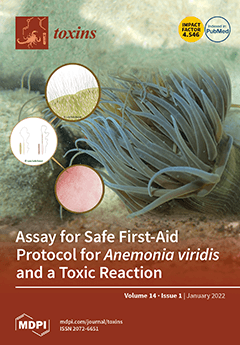Fusarium head blight (FHB) is an economically important plant disease. Some
Fusarium species produce mycotoxins that cause food safety concerns for both humans and animals. One especially important mycotoxin-producing fungus causing FHB is
Fusarium graminearum. However,
Fusarium species form a disease complex
[...] Read more.
Fusarium head blight (FHB) is an economically important plant disease. Some
Fusarium species produce mycotoxins that cause food safety concerns for both humans and animals. One especially important mycotoxin-producing fungus causing FHB is
Fusarium graminearum. However,
Fusarium species form a disease complex where different
Fusarium species co-occur in the infected cereals. Effective management strategies for FHB are needed. Development of the management tools requires information about the diversity and abundance of the whole
Fusarium community. Molecular quantification assays for detecting individual
Fusarium species and subgroups exist, but a method for the detection and quantification of the whole
Fusarium group is still lacking. In this study, a new TaqMan-based qPCR method (FusE) targeting the
Fusarium-specific elongation factor region (
EF1α) was developed for the detection and quantification of
Fusarium spp. The FusE method was proven as a sensitive method with a detection limit of 1 pg of
Fusarium DNA.
Fusarium abundance results from oat samples correlated significantly with deoxynivalenol (DON) toxin content. In addition, the whole
Fusarium community in Finnish oat samples was characterized with a new metabarcoding method. A shift from
F. culmorum to
F. graminearum in FHB-infected oats has been detected in Europe, and the results of this study confirm that. These new molecular methods can be applied in the assessment of the
Fusarium community and mycotoxin risk in cereals. Knowledge gained from the
Fusarium community analyses can be applied in developing and selecting effective management strategies for FHB.
Full article






